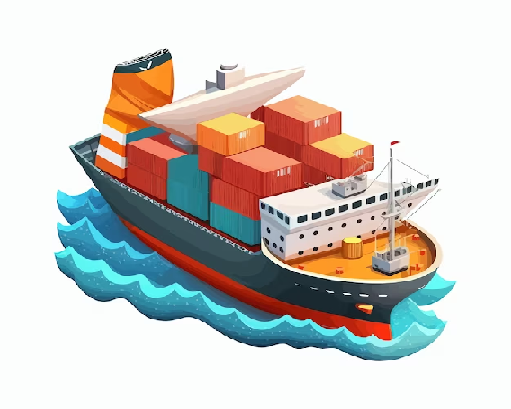In the intricate dance of global commerce, the spotlight is increasingly turning towards the seamless integration of transportation modes. Intermodal drayage and transloading services are emerging as the linchpin, revolutionizing the way goods traverse the vast networks of our interconnected world.
The Symphony of Modes
Embracing Diversity
Intermodal transportation, at its essence, is a symphony of modes harmonizing to deliver goods with unparalleled efficiency. Picture this: a cargo container seamlessly transitioning from ship to rail, then to a truck, each segment optimized for its specific strengths. It’s a choreography of transportation prowess that enhances not just speed but reliability.
Efficiency Unleashed
At the heart of intermodal logistics lies the concept of intermodal drayage. This is the crucial link that connects the dots, ensuring that containers smoothly transition between different transportation modes. Drayage, often performed by specialized carriers, is the catalyst that propels cargo from port to rail or truck, making sure that the transition is not just smooth but swift.
Unveiling the Tapestry: Reasons to Embrace Intermodal Transportation
- Seamless Connectivity
Imagine a global map where borders are mere lines, and transportation is a fluid force that transcends boundaries. Intermodal transportation makes this vision a reality. Containers seamlessly move from ocean vessels to rail cars and trucks, dissolving the traditional barriers that hindered the flow of goods.
- Cost Optimization
In the realm of logistics, every penny counts. Intermodal transportation stands tall as the paragon of cost efficiency. The strategic combination of different modes minimizes overall expenses, translating to a boon for businesses aiming to streamline their supply chains. From reduced fuel costs to optimized routes, the financial advantages are undeniable.
- Environmental Sustainability
As the world collectively grapples with the imperative to reduce carbon footprints, intermodal transportation emerges as a beacon of environmental responsibility. By minimizing the reliance on traditional trucking, this mode of transportation significantly curtails greenhouse gas emissions. It’s not just a logistical choice; it’s a commitment to a greener, more sustainable future.
- Reliability Redefined
In the realm of logistics, reliability is the bedrock on which successful supply chains are built. Intermodal transportation introduces a new level of dependability. The multi-modal approach acts as a safety net; if one mode faces disruptions, others seamlessly pick up the slack. It’s a risk mitigation strategy that ensures goods reach their destination, regardless of external challenges.
- Transloading Triumphs
Enter the concept of transloading services – the unsung hero in the intermodal narrative. Transloading is the process of transferring goods from one mode of transportation to another. It’s the secret sauce that enables cargo to seamlessly shift between ship, rail, and truck, optimizing the entire logistics chain. Transloading services not only facilitate mode transitions but also allow for customization and consolidation, unlocking a new dimension of flexibility.
- Strategic Flexibility
In the dynamic landscape of global trade, adaptability is non-negotiable. Intermodal transportation provides businesses with a strategic edge by offering unparalleled flexibility. The ability to switch between modes in response to market fluctuations or unforeseen challenges ensures that companies stay agile in the face of uncertainty.
- Infrastructure Efficiency
The efficiency of intermodal transportation isn’t confined to the movement of goods alone. It extends to the very infrastructure that supports this intricate ballet. Intermodal terminals, designed to seamlessly facilitate mode transitions, become hubs of efficiency. These nodes serve as nexus points where different transportation modes converge, creating a network that’s as efficient as it is robust.
- Global Reach, Local Impact
The global marketplace demands a logistics approach that thinks both globally and locally. Intermodal transportation caters to this demand flawlessly. It’s the bridge that connects the vast oceans to the last mile, ensuring that goods traverse the world with equal ease. This global-local synergy is not just a convenience; it’s a strategic imperative.
- Technology Integration
Intermodal transportation isn’t just about physical movement; it’s a symphony conducted by technology. Tracking and monitoring systems ensure real-time visibility, providing stakeholders with a level of control that was once unimaginable. This integration of technology is the silent force that propels intermodal logistics into the future.
Navigating Challenges: The Uncharted Waters
No innovation comes without its challenges, and intermodal transportation is no exception. The complexity of coordinating different modes, the need for standardized protocols, and infrastructural requirements pose hurdles that demand meticulous navigation. However, it’s precisely in overcoming these challenges that the true potential of intermodal transportation shines.
The Tapestry Unfurls: The Future of Intermodal Transportation
As we stand at the cusp of a new era in logistics, intermodal transportation emerges as the vanguard of change. The integration of intermodal drayage and transloading services isn’t just a choice; it’s a strategic imperative. It’s the unraveling of a tapestry that weaves together efficiency, sustainability, and reliability into the very fabric of global commerce.
In this symphony of logistics, each mode plays a distinct role, and the harmony achieved is nothing short of revolutionary. It’s a future where the seamless flow of goods isn’t just a possibility; it’s the new norm. Intermodal transportation isn’t just a logistics solution; it’s the key that unlocks a world where borders blur, and efficiency reigns supreme.





